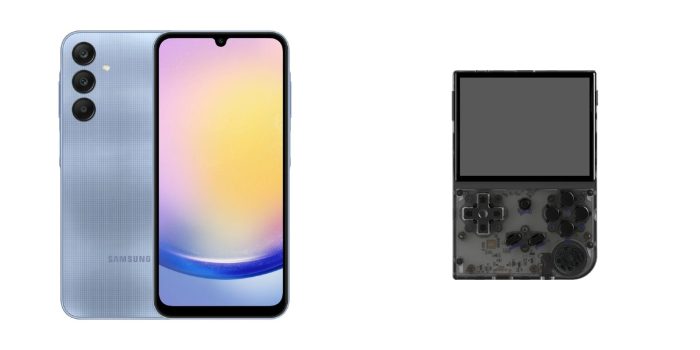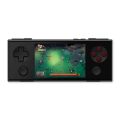When it comes to experiencing retro games, there are generally two popular options: using emulators on an Android phone or investing in a handheld gaming console. I’ve explored both paths and want to share my opinion on their pros, cons, and performance for retro gaming enthusiasts.
Setting Up and Ease of Use
Handheld Gaming Console: Simple and Ready to Play
If you go for a handheld gaming console, setup is almost effortless. Many of these devices come preloaded with emulators and even have some games included. In most cases, it’s as simple as turning the device on and picking your favorite game. For someone who doesn’t want to spend hours figuring out how to configure everything, this plug-and-play experience is a major advantage.
You still have the option to customize settings like button mapping and screen resolution, but it’s typically much simpler compared to what you’d deal with on a phone. Plus, physical controls, like joysticks and action buttons, are built-in and optimized for retro gaming.
Android Phone: Lots of Potential, but Time-Consuming Setup
On the other hand, setting up emulation on an Android phone is not for the faint of heart. You’ll need to download the right emulators for each console (like RetroArch or Dolphin), and that’s only the beginning. Configuring these emulators to get the best performance can be a headache. You have to adjust things like frame rates, graphic shaders, and button mapping. Some emulators even have multiple options, which means trial and error until you find what works best.
Another thing to consider is that touchscreen controls are often impractical for retro games. Using a dedicated gamepad is almost a necessity, which adds another layer of complexity to the setup process.
Winner: Handheld Gaming Console
When it comes to convenience and ease of setup, handheld gaming consoles win hands down. Android phones require a more significant investment of time and effort to get everything working smoothly.
Performance and Game Compatibility
Handheld Gaming Console: Built for Purpose but Limited
Handheld consoles designed for retro gaming are optimized for their specific purpose. Devices like Anbernic or Retroid models run older titles from systems like the NES, SNES, and even PlayStation 1 without breaking a sweat. While they may have limited hardware compared to modern smartphones, they’re generally built to handle classic games perfectly well.
That said, don’t expect miracles if you want to play more demanding games, like those from the PlayStation 2 or Nintendo GameCube era. Most budget handheld consoles can’t handle these newer retro titles effectively.
Android Phone: High Performance but Potential Issues
Most modern Android phones boast powerful processors and GPUs, making them more than capable of running a wide range of emulators. Even mid-range phones can handle systems up to the Dreamcast or PSP with relative ease. This gives Android phones an edge in terms of sheer performance and versatility. If you have a flagship model, you can even emulate games from more recent consoles like the PlayStation 2 and GameCube.
However, all that power doesn’t guarantee a smooth experience. Performance can be inconsistent across different emulators, and some games may suffer from graphical glitches or lag unless you spend time tweaking the settings.
Winner: Android Phone (with Conditions)
When it comes to raw performance and the ability to emulate more demanding systems, Android phones are the clear winner. But be prepared to encounter occasional issues and spend time fixing them.
Control Experience
Handheld Gaming Console: Physical Controls Make a Difference
For retro gaming, having tactile, physical controls is a big plus. Handheld gaming consoles come with built-in buttons, d-pads, and joysticks that mimic the feel of classic game controllers. This creates a nostalgic and authentic gaming experience that touchscreen controls simply can’t match.
Most handhelds are well-designed, with button layouts optimized for old-school gaming. They are perfect for games where precise control is crucial, like platformers or fighting games.
Android Phone: Requires Accessories for a Good Experience
While modern Android phones can run games well, touchscreen controls are usually a deal-breaker for retro games. Using on-screen buttons just doesn’t feel right and often covers parts of the display, reducing your immersion. If you’re serious about retro gaming on your phone, you’ll likely need to buy a gamepad or a controller attachment, like the Razer Kishi or GameSir options. While this setup can work well, it’s another investment and can make your phone cumbersome to carry around.
Winner: Handheld Gaming Console
If you care about the quality of controls, handheld gaming consoles win. Android phones can get close, but only if you invest in additional accessories.
Display Quality and Screen Size
Handheld Gaming Console: Compact but Effective
Most budget handheld consoles come with relatively small screens, usually ranging from 3.5 to 5 inches. These displays are functional and adequate for retro games, but they’re not always top-of-the-line. Colors and viewing angles might not be the best, especially on lower-end devices. However, some higher-end models like the Retroid Pocket 3+ feature impressive IPS screens that are on par with many smartphones.
Android Phone: Stunning Displays
Modern smartphones have excellent screens, often featuring high-resolution AMOLED or OLED panels with stunning color accuracy and brightness. If you care about visual quality, an Android phone will likely provide a better experience, especially for games that benefit from vibrant colors. Additionally, the larger screen size makes for a more immersive experience.
Winner: Android Phone
If display quality matters to you, the phone is the obvious choice. Handheld consoles have decent screens but usually can’t compete with the visual brilliance of a smartphone.
Portability and Battery Life
Handheld Gaming Console: Convenient but Limited
Handheld consoles are specifically designed to be portable, but battery life can vary depending on the device and what you’re playing. Most devices offer anywhere from 4 to 8 hours of playtime, which is generally enough for a decent gaming session. Since these consoles are dedicated devices, you won’t drain your phone’s battery by playing games, which is a big plus if you need your phone for other things.
Android Phone: Always with You but Battery Concerns
One advantage of using your Android phone for gaming is that it’s something you probably always have with you. But if you’re gaming for hours, you’ll see a significant drain on your battery. This could leave you stranded without power for calls, texts, or browsing. Carrying a power bank can mitigate this, but it adds extra bulk.
Winner: Handheld Gaming Console
Handheld gaming consoles are the better option for long gaming sessions without worrying about draining your phone’s battery.
Overall Experience
Handheld Gaming Console: Made for Gamers
The biggest advantage of a handheld console is that it’s built for gaming. It’s easy to use, has physical controls, and provides a classic gaming experience. It may lack the versatility of a smartphone, but it does its job well without requiring any additional setup.
Android Phone: Versatile but Not Specialized
Android phones offer unmatched versatility. You can use them for gaming, but also for browsing, watching videos, and more. If you’re tech-savvy and willing to invest time in setting everything up, an Android phone can be a fantastic emulation device. However, it’s never as seamless or satisfying as using a dedicated gaming console.
Final Thoughts
Choosing between an Android phone and a handheld gaming console comes down to what matters most to you. If you prioritize ease of use, physical controls, and a streamlined experience, a handheld console is the way to go. However, if you value performance, display quality, and already have a modern smartphone, emulating on your phone is a valid option—just be prepared for some headaches along the way.
Ultimately, I lean towards a handheld gaming console for a hassle-free, nostalgic experience. But if you’re tech-savvy and want to maximize your device’s potential, an Android phone is worth exploring. The choice is yours, but either way, retro gaming is about enjoying the classics, and both options let you do just that. Happy gaming!





